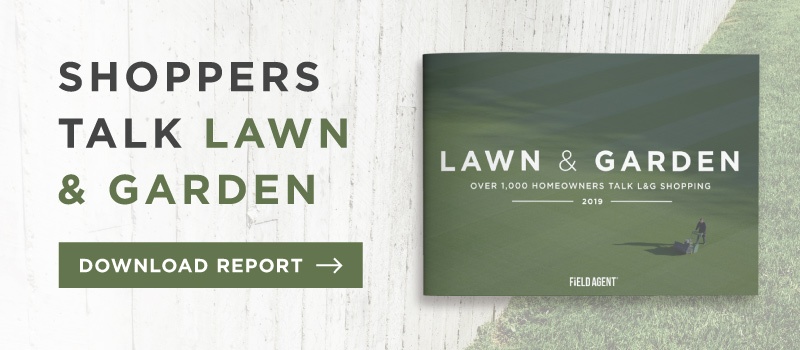
4 Eye-Opening Allergy Insights You Shouldn’t Sneeze At [Survey]

A survey is only as good as its locational awareness.
After all, many purchases—whether ice cream, chainsaws, or flood insurance—are affected by local factors such as climate, culture, and demographics. We wouldn’t necessarily expect consumers in every part of the country to purchase the same amount of, for instance, Ben and Jerry’s Chunky Monkey.
Location can greatly influence what consumers buy, when they buy, and how much/often they buy.
This is particularly true for allergy products. The allergy season is experienced quite differently around the country. So to understand the purchases of allergy sufferers, it’s important to account for consumers' locations.
On Location with Allergy Sufferers
Field Agent recently surveyed over 500 homeowners in five different U.S. regions about their lawn and garden attitudes and behaviors. Additionally, we took the occasion to ask them about their allergy-related purchases.
After all, there’s a lot of money in allergens. By one estimate, industry sales may have reached $1.8 billion in 2014 alone.
With so much at stake, here are 4 important insights from our survey.
Consumer Insights: Allergy Season
1. 86% of respondents reported purchasing (or plan to purchase) at least one allergy prevention and/or treatment for the 2015 allergy season.
The survey offered several options for consumers to choose from: antihistamines, decongestants, eye drops, natural remedies, pain relievers, sore throat/cough medications, and even air purifiers/humidifiers. Across the country, regardless of region, households showed strong purchase behaviors or intentions toward allergy preventions and treatments.
2. Antihistamines (e.g., Allegra, Claritin) easily topped decongestants, pain relievers, eye drops, and sore throat/cough treatments as the most prevalent allergy prevention/treatment across the country.
In our survey, antihistamines earned top spot among allergy preventions and treatments, as 63% of respondents reported buying at least one this year.
Decongestants (44%) and pain relievers (42%) took second and third place, respectively. Consumers in the Northeast, Southeast, Midwest, and Southwest showed similar antihistamine usage levels, while Westerners said they purchased or plan to purchase antihistamines somewhat below the national average (see point #3).
![Which of the following purchases will you make or have you made to prevent or treat springtime allergies? [GRAPH] Which of the following purchases will you make or have you made to prevent or treat springtime allergies? [GRAPH]](http://blog.fieldagent.net/hs-fs/hubfs/Campaigns/Lawn_and_Garden/Allergy_Graph.png?width=850&name=Allergy_Graph.png)
3. Westerners in our sample purchase noticeably less medicine to combat allergies.
For three categories, antihistamines (86% of the national average), decongestants (70%), and pain relievers (89%), consumers in the western United States reported usage rates somewhat below other parts of the country. Compare this to Northwesterners, who purchase decongestants (e.g., Mucinex) at 128% and pain relievers (e.g., Tylenol) at 111% of the national average.
4. 24% of respondents said they have purchased at least one allergy medication over another as the direct result of an advertisement.
Of course, consumers don’t always know when they’ve been influenced by an ad. But for this study, 24% reported knowledge of a time they were influenced by an advertisement to purchase one allergy medication over another.
And because some respondents were conscious of advertising’s influence on their allergy purchases, we asked these to tell us exactly why a specific advertisement had prompted their selection of one medication over another. Their responses varied widely.
Some mentioned they were convinced by the situations portrayed in the advertisement. By way of example, a 50-year-old woman from Snellville, Georgia said, "The commercial showed situations that directly affect my life."

A 61-year-old woman from Austin, Texas commented on the sheer volume of advertisements run by a particular brand. She said, "I found the…commercials influential because they are so ubiquitous."

While another, a 46-year-old female from Southhaven, Mississippi, suggested timing is everything. "It came on at a time when we needed to buy this type of medication so the brand name stuck with me," she said.

As you can see, the reasons why allergy medication advertisements may work—in the most direct, conscious way—vary from one consumer to another. But, for our sample, they do seem to work, for a good portion of consumers any way.
Special Report: 2019 Lawn & Garden Shoppers
Are you ready for this year's Lawn & Garden shoppers? We asked over 1,000 homeowners across the country a series of questions, including:
- What lawn and garden activities do you expect to engage in this spring?
- How much do you anticipate spending on lawn and garden supplies this year?
- From what type of retailer do you expect to purchase most of your supplies?
- How likely are you to purchase these materials online?
- What matters most when purchasing lawn and garden supplies?
- What do you most dislike about shopping for lawn and garden products?
Download Field Agent’s 2019 Lawn & Garden Report for the answers to these and other questions. Now available for free download!

